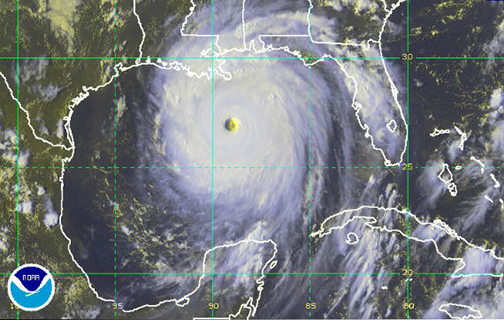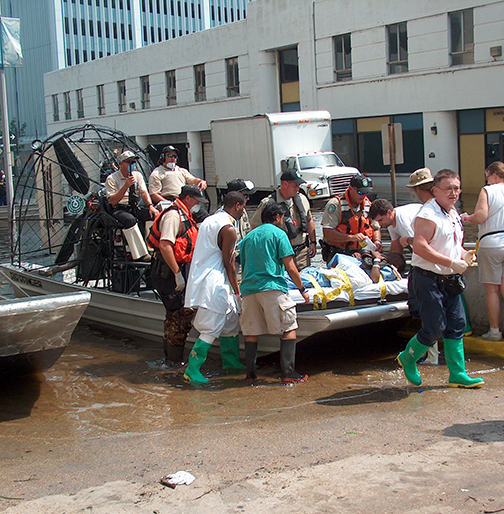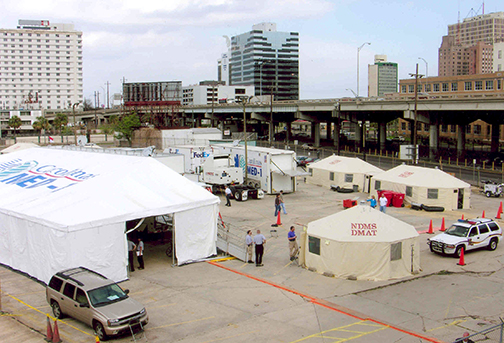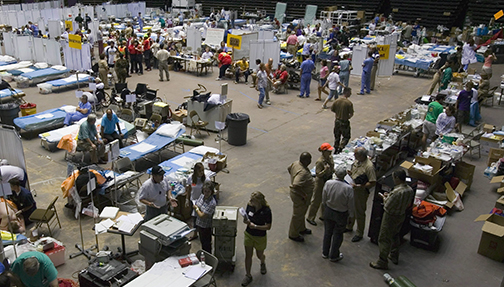On August 29, 2005, as the eye of Hurricane Katrina came ashore thirty-five miles east-northeast of New Orleans, poorly designed federal floodwalls failed, allowing water to pour through the breaches and flood 80% of the city. Our campuses, our homes, and our city were inundated, as the steadily deepening and then stagnating water washed away life as we knew it. The aftermath of the worst manmade disaster in US history challenged us in ways never before faced in this nation.


Our heroic faculty trapped in the waters endured unimaginable conditions, keeping their patients alive without power, running water and even the most basic medical resources in hospitals with no life support. Others cared for evacuated patients in temporary medical staging areas planned and staffed by LSU Health New Orleans faculty and others, not knowing the fate of their loved ones, homes and property. Still others worked to resurrect our educational enterprise, achieving an impossible feat – essentially rebuilding a university of six health professional schools from scratch in very short order. Faculty, staff and students were scattered throughout the country, and communications were crippled. We had no classrooms, textbooks, clothing or housing. Seven of our teaching hospitals were closed, and other clinical sites were under water, too.
The only New Orleans health sciences center to remain the in state, we kept our educational commitment to our students and our commitment to Louisiana’s health. As the source of the majority of Louisiana’s health care professionals, we were able to safeguard immediate access to care as well as future access to care by reestablishing our academic and training programs without missing a beat. A testament to the fortitude of faculty, staff and students, attendance was 98% on September 26, 2005, the day classes resumed in borrowed space in Baton Rouge.
Through indescribably difficulty circumstances, shining examples of character and creativity emerged. It is amazing how much can be done with precious little. A movie theater became lecture rooms. A state-of-the-art dental student clinic was built next to a cow pasture. A Baltic ferry with overnight accommodations became housing for faculty and students. A field hospital was erected in a K-Mart parking lot. LSU Health New Orleans emergency medicine faculty were took care of people outside and then inside the Convention Center – the first time civilians were ever incorporated into a Combat Support Hospital. To enable the first post-K Mardi Gras, three-phase power was cobbled together in a matter of hours, along with a wrench from the fire department to turn on running water to a hose connected to a fire hydrant in a bare parking lot for a mobile support hospital and D-MATS. AN LSU Health faculty physician became medical director of a navy hospital ship, and a department store was converted into an emergency room and clinic.


We then set about rebuilding the city’s permanent health infrastructure, along with partners at the federal and state level. The result is improved and expanded facilities on both LSU Health New Orleans campuses, University Medical Center and projects and partnerships that will continue to drive the growth and success of our academic, health and research enterprises into the future.
Friedrich Nietzsche was right when he observed, “Whatever doesn’t kill us makes us stronger.” LSU Health New Orleans built back smarter, better, stronger and with a heightened sense of purpose forged through the knowledge that we were tested and we triumphed.
